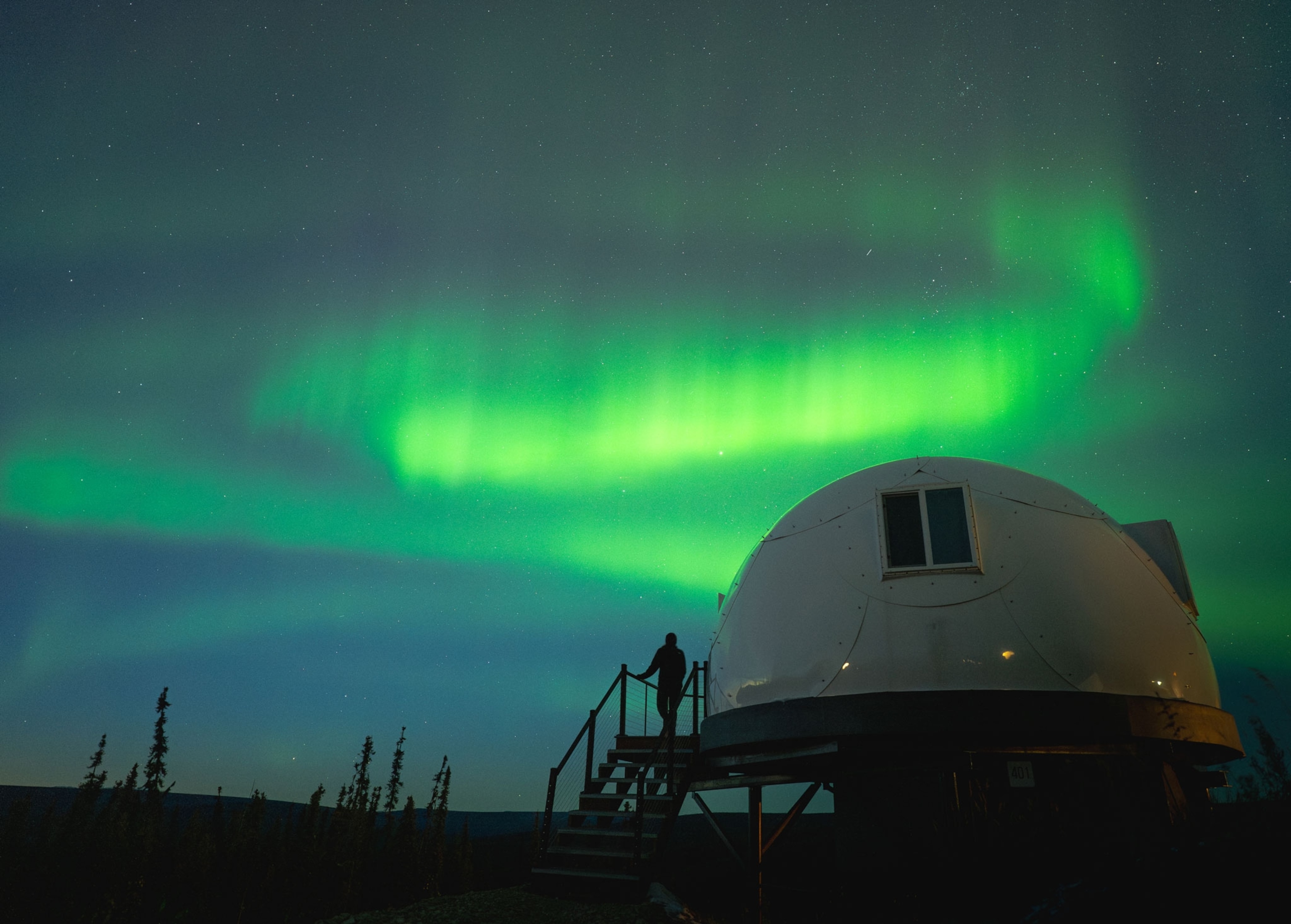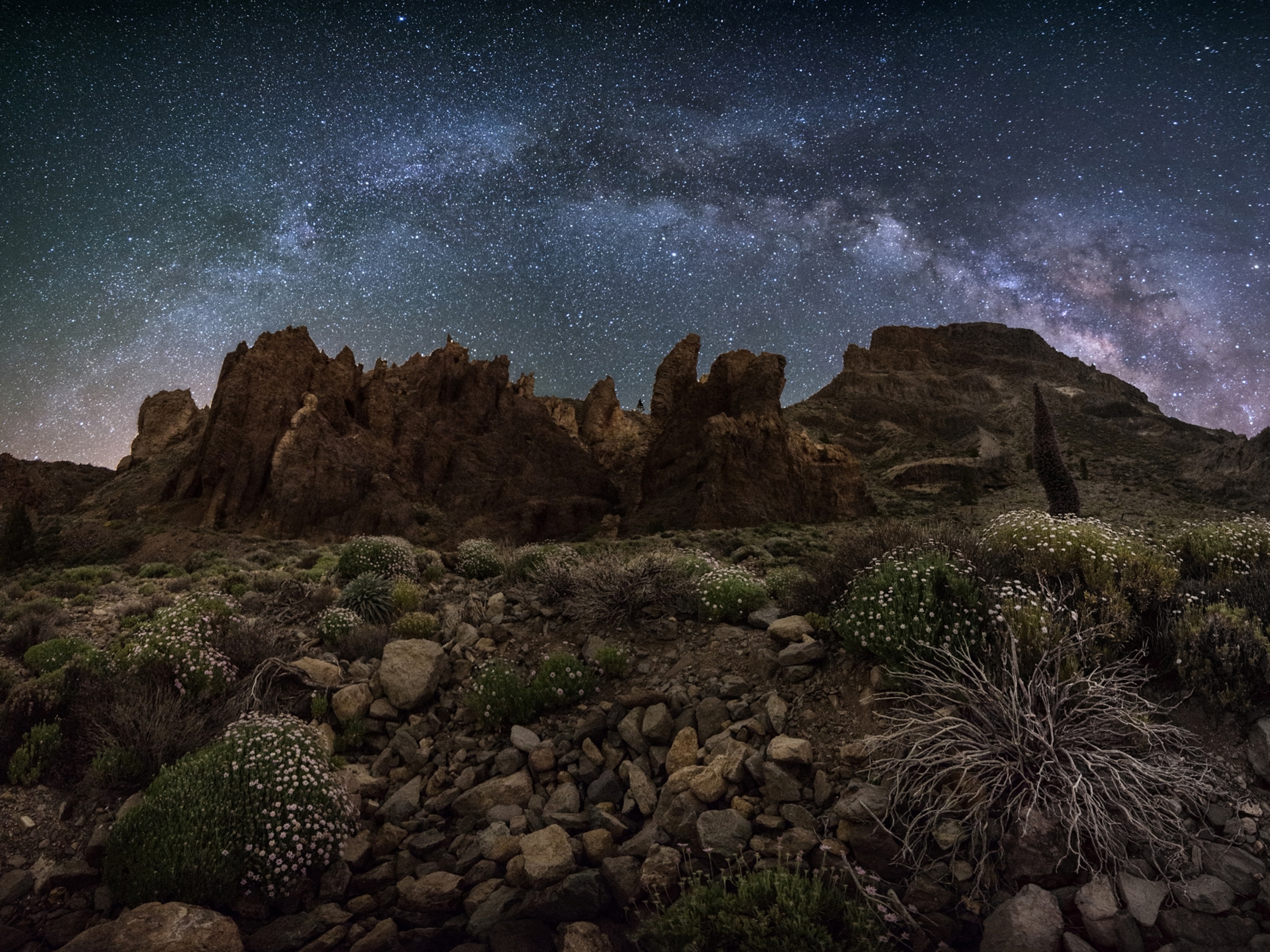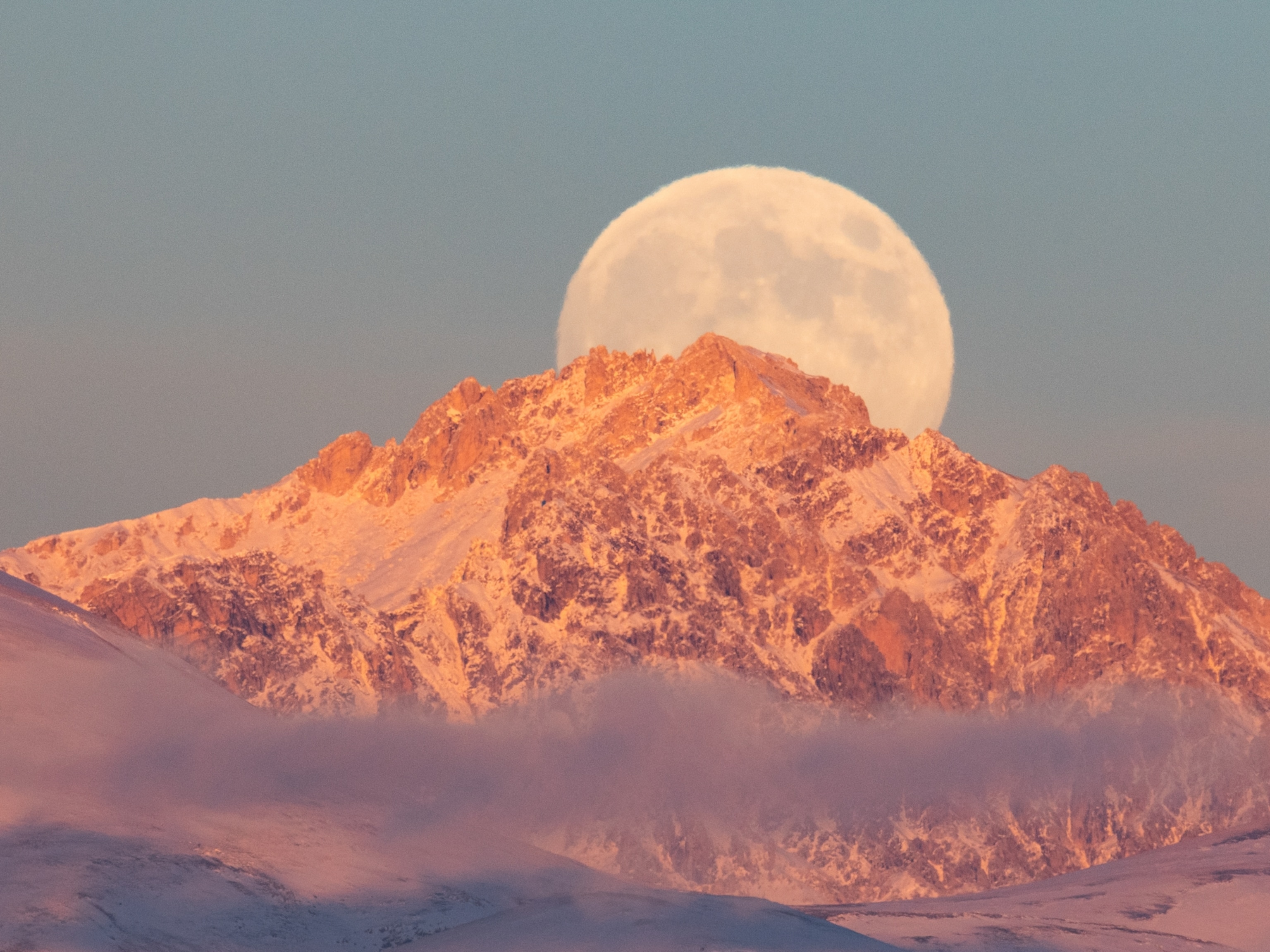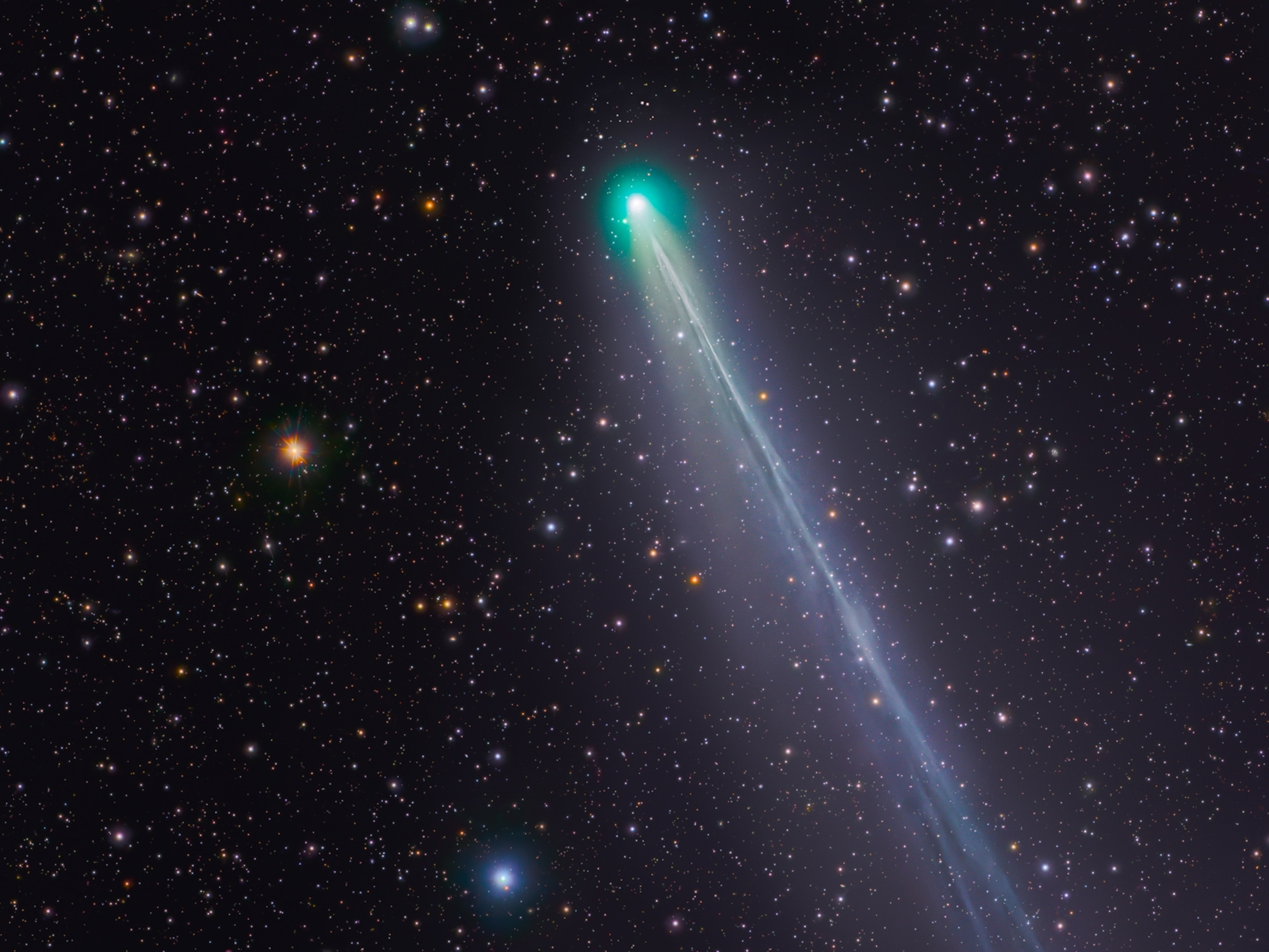How to see the northern lights in Alaska
America’s northernmost state is the perfect front-row seat to the aurora borealis—and this winter will be an extra special time to see it.

Much of America’s northernmost state, Alaska, lies in the auroral oval, a donut-shaped region of light activity above Earth’s geomagnetic North and South Poles. The green and violet ribbons delight travelers during any Alaska aurora season—but this winter could be extra special. That’s because the sun, which triggers the spectacle, is in its roughly 11-year peak of activity.
“You can have aurora every single night in some capacity,” says Vince Ledvina, a professional aurora chaser and doctoral student at the University of Alaska Fairbanks.
Auroras occur when charged particles from the sun, carried by solar wind, excite gases in Earth’s atmosphere. “When you have a big gust of wind, such as a coronal mass ejection (CME) [an eruption of solar plasma], you get geomagnetic storms,” Ledivina says. “That’s when everything becomes crazy.” Think: dancing swirls and kaleidoscopic displays in every direction.
The sun experiences a spike in solar activity—including an increase in CMEs and high-speed solar wind streams—which means a greater chance for colorful, dynamic, and easily visible auroral displays.
(The best view of the northern lights involves a lot of travel—but it is so worth it.)
What season is best for northern lights in Alaska?
Alaska’s aurora season technically runs from late August into April, but some periods are better than others.
To see the show, you need at least partially clear skies. Heading inland, to areas around Fairbanks, can help you escape incessant cloud cover—especially after autumn. “There’s always a chance that it’s going to be cloudy in the spring, but typically, it’s clear,” Ledvina says, noting that March is an especially optimal month. March experiences fewer clouds, and the autumn and spring equinoxes tend to spark above-average geomagnetic activity.
Aurora hunting in Alaska can occur any time after dark if the activity is strong enough. Usually, though, the best shows happen in the early morning, between around 1 to 3 a.m., says Ledvina. “The biggest reason people miss the show in Fairbanks is they go to bed too early.”
(Chasing the northern lights? Here’s what forecasters can—and can’t—tell you.)
Where to see the aurora borealis in Alaska
You could technically scout for the colorful streaks all over Alaska, but the awe increases as you journey north. In Anchorage, for example, the lights often appear several times per week, but the sightings typically stay on the horizon or halfway up the sky. Further up the state, those ribbons are likelier to dance overhead. Here’s where to chase them.
Fairbanks
This is the hub of aurora hunting in Alaska. It’s relatively reachable, with year-round direct flights from Seattle. Plus, the Fairbanks aurora tours abound—and these are a great idea for beginners. Chasing the sky streaks benefits from local knowledge and space-weather savvy. A guide can take out the guesswork and they can do the driving and scouting while you nap until the big show. Outfitters include Greatland Adventures and Face the Outdoors. Ledvina also co-runs his own aurora guiding company.

For aurora-hunting accommodations, try Borealis Basecamp, a collection of sky-view igloos and cabins roughly 30 miles outside of Fairbanks. Here, you can watch for the colorful scribbles from bed. Aurora wake-up calls alert you to those late-night shows, and daytime adventures like UTV rides, reindeer walks, and mushing help you make the most of your daytime hours in Fairbanks.
Chena Hot Springs, located 60 miles from Fairbanks, also provides a coveted aurora-hunting splurge: scouting for the green swirls while staying cozy in a geothermally heated pool. The on-site hotel also runs aurora snow coach tours to the tip of Charlie Dome mountain, where guests wait for the lights from inside warm yurts.
To learn the science of the sky marvel, stop by the University of Alaska’s Museum of the North in Fairbanks. The facility’s aurora exhibits explain the how and why of this spectacle, while other rooms cover millions of years of history, including exhibits on Alaska Native culture and Arctic dinosaurs.
(How to see the northern lights—and why they’re showing up more recently.)
Wiseman
Just over 60 miles above the Arctic Circle, you’ll find Wiseman, a small town of roughly a dozen residents that lies near the Gates of the Arctic National Park boundary. It’s a roughly eight-hour slog to drive up here from Fairbanks. The long journey—which may come with roadside moose sightings—is well worth the awe of lights chasing in the Brooks Range, a 700-mile string of sawtooth peaks where hundreds of thousands of caribou migrate each year.
For an aurora-meets-wellness excursion in Wiseman, book a multi-day getaway at Arctic Hive. Its owners, Mollie and Sean Busby, host off-grid retreats throughout the aurora season that blend yoga, hiking, and aurora chasing, with transit to and from Fairbanks included.
At Arctic Getaway, a collection of cabins in Wiseman, travelers can also learn about the homesteading lifestyle with their hosts by day then chase the aurora after dark.
Denali National Park
Denali, a 125-mile drive from Fairbanks, also lies near the aurora oval. Catching the sky streaks above the Alaska Range’s snow-capped peaks is a dream for photographers, but seeing the colorful curtains can be tricky given the area’s notorious cloud cover.
Aurora season is technically the park’s off time, but visitors can still enjoy this topographical wonder and the surrounding area in several ways: dog-sledding, cross-country skiing, and winter biking. You can still spot wildlife like caribou and moose in the off season, too.
Visitors can chase the northern lights from the national park; the main entrance remains open 24 hours, although portions of the road may close due to weather. Alternatively, consider overnighting just outside the park boundaries at Denali Lakeview Inn in Healy. The lodge’s water-view rooms overlook a glassy lake and soaring peaks—the perfect backdrop for Alaska’s late-night magic show.






